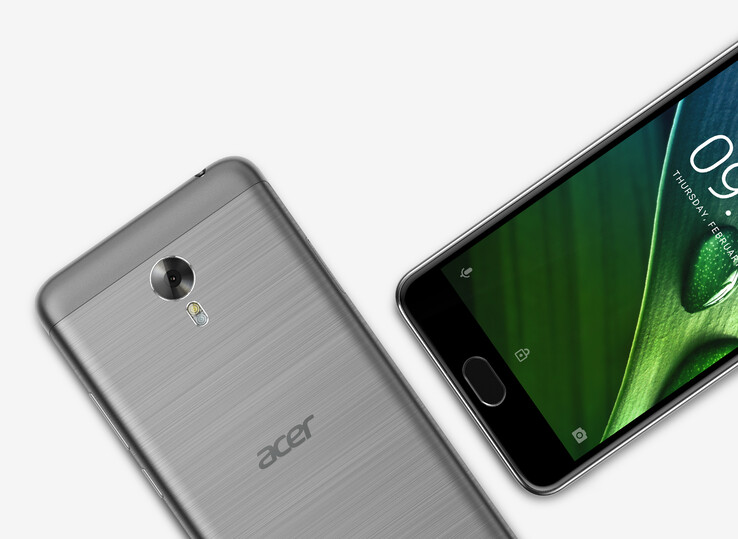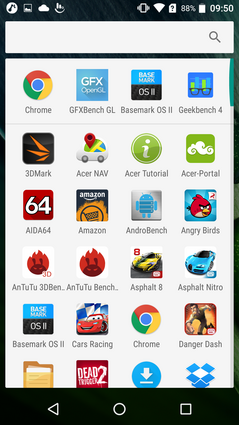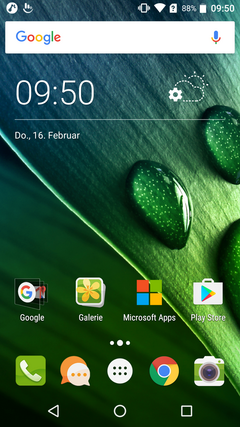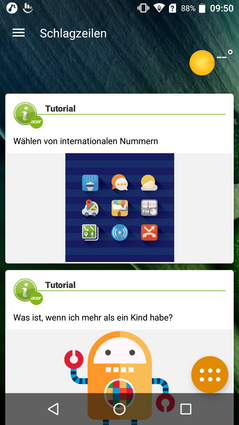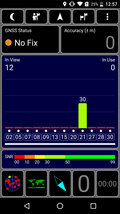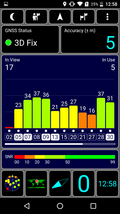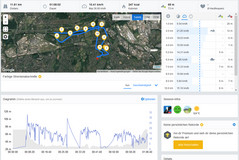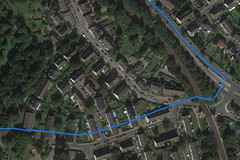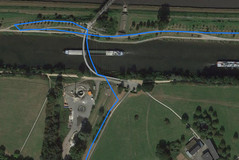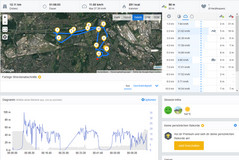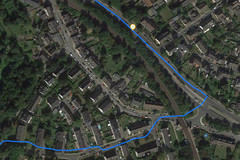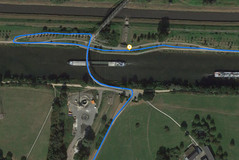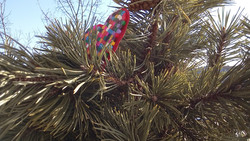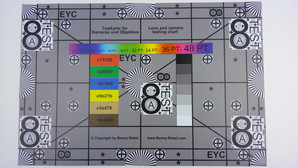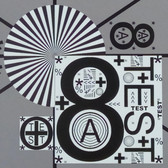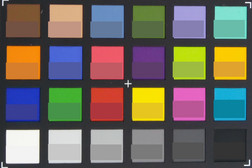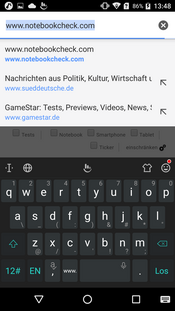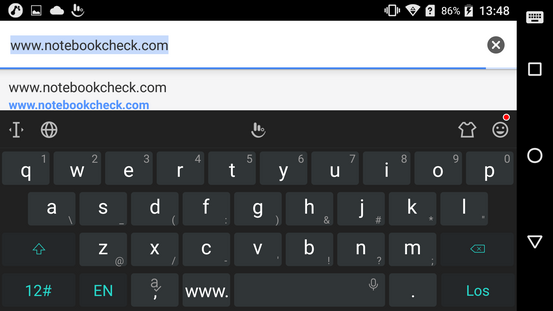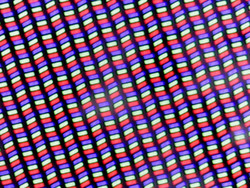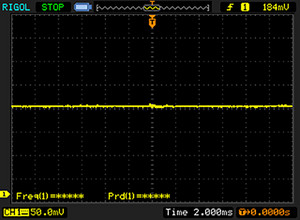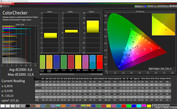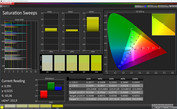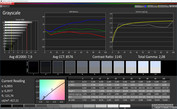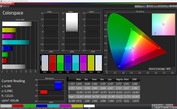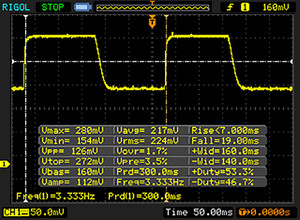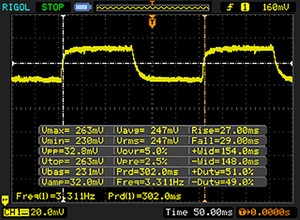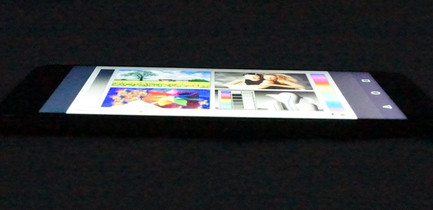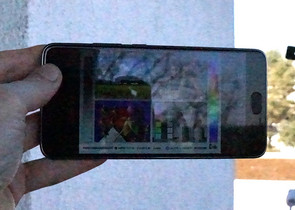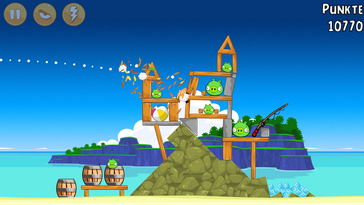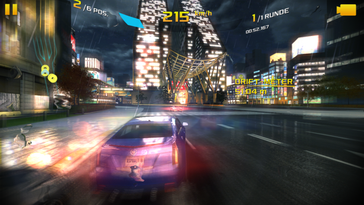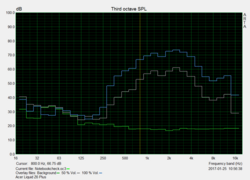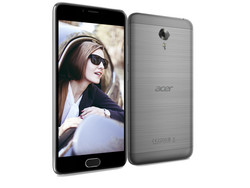Acer Liquid Z6 Plus Smartphone Review
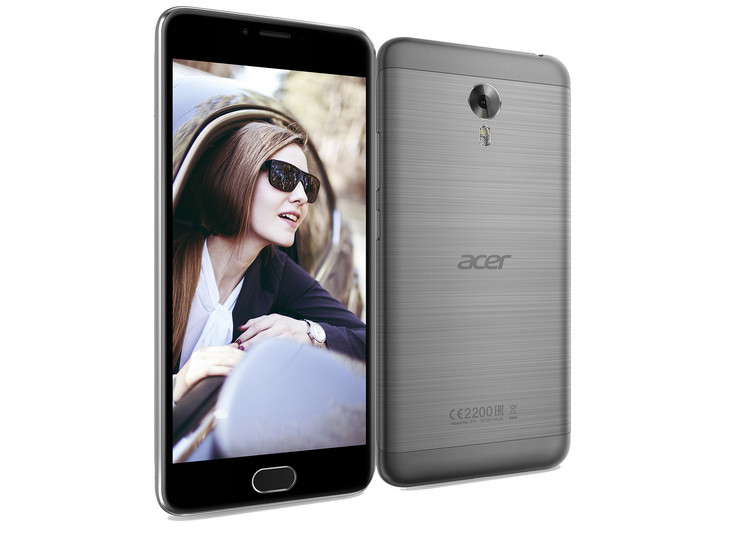
For the original German article, see here.
The Liquid Z6 Plus can be considered a flagship model of sorts for Acer, since the manufacturer has no ambitions to offer truly high-end Android smartphones at this time. Although the official retail price is about 300 Euro (~$320), we were able to find the Z6 Plus for about 260 Euro (~$275) online. For this price, the smartphone comes very well-equipped; highlights are without a doubt the Full-HD display and the humongous battery.
There are many appealing smartphone choices in this price segment, however, including Acer's own Liquid Jade Primo. This Windows 10 Mobile phone is/was actually a lot more expensive, but its price has slipped as its OS is slowly loses more ground. The Samsung Galaxy J7 (2016) scores with a great case design and a large battery, while HTC focuses more on sound quality with their Desire 10 Lifestyle. The ZTE Axon 7 Mini features a slightly smaller display, but exudes upper-class flair. How does the Acer holds up against the competition is the subject of our review.
Case
2.5D glass - meaning glass with curved edges - is very popular right now and Acer uses is for the Liquid Z6 Plus as well. The integrated metal back features a brushed design and extends around the edges. The gaps are not alway completely even, but as a whole, the phone looks quite seamless and rather upscale as well. At this time, there's only a dark-gray variant with a black faceplate.
For a 5.5-inch phone the Acer Liquid Z6 Plus is quite heavy at 169 g (6 oz), but because of the heft and the rounded edges, it's quite easy to hold. The torsional rigidity is very good as well and pressing on the front or back has no noticeable effect on the display.
Connectivity
3 GB of RAM and 32 GB of flash storage are the de facto standard for many smartphones in this price class. The Z6 Plus can handle two SIM cards simultaneously, but the microSD card and the secondary SIM card share a slot, so the user has to decide if they want a Dual-SIM phone or extend the the storage. The microSD card can be formatted as an internal drive or used as removable media; in the latter case, the card can be selected as standard storage drive, so apps supporting the App2SD functionality automatically move to the card.
Software
As a PC manufacturer, Acer of course has close ties to Microsoft, so it's not really surprising that the Liquid Z6 Plus features "Microsoft Apps" on the home screen. Closer inspection reveals that this is only a collection of links to the Google Play Store, however. The navigation app "Acer NAV" is courtesy of TomTom; the user can register in the "Acer Portal" to receive tips for the smartphone as well as cloud storage. "Acer Tutorial" features video or text tutorials and the "KidsCenter" allows the user to childproof the start screen. In addition, there are a plethora of ad-based apps and games preinstalled - so many in fact, that only 22 GB out of 32 GB are available to the user. Purists wanting a "clean" OS need to put in some work and uninstall numerous applications.
The Liquid Z6 Plus runs Android 6 with the security patches dating back to December 5th, 2016. Acer uses their own launcher, which shows news, social media updates, or the user's own content to the left of the home screen. Most other tweaks are cosmetic in nature.
Communication and GPS
The phone supports WLAN according to standards 802.11 b/g/n, which might not seem generous, but it's par for the course for this class. The WiFi transfer rates (standardized test with our reference router Linksys EA8500) are not that impressive - the HTC Desire 10 Lifestyle is much faster. Real-world tests show that it takes a bit longer to load a page once in a while even very close to the router, although the reception is always flawless. Ten meters (33 feet) away from the router and through three walls, the signal strength was still at 3/4 and pages loaded nearly as fast as they would have right next to the router.
The Acer Liquid Z6 Plus supports eight LTE bands and four UMTS as well as four GSM frequencies. At least while abroad within Europe, coverage should therefore be sufficient. Reception quality in the inner city - we use the well-developed German Vodafone network - is quite good and the LTE signal strength remained at 3/4 even inside buildings.
| Networking | |
| iperf3 transmit AX12 | |
| HTC Desire 10 Lifestyle | |
| ZTE Axon 7 Mini | |
| Acer Liquid Z6 Plus | |
| Samsung Galaxy J7 2016 | |
| iperf3 receive AX12 | |
| HTC Desire 10 Lifestyle | |
| ZTE Axon 7 Mini | |
| Acer Liquid Z6 Plus | |
| Samsung Galaxy J7 2016 | |
Indoors the Liquid Z6 Plus wasn't able to establish a satellite link at all; outside, GPS connectivity took a little before the smartphone could pinpoint our location with an accuracy of five meters (~16 feet).
To get a better idea of the GPS capabilities, we conduct our bicycle test to compare the review smartphone to the professional navigation unit Garmin Edge 500. Surprising is the fact that the Z6 Plus only showed 300 m less than the actual distance - during our test with the app "Runtastic", the smarpthone repeatedly lost contact and simply recorded a straight line. At the intersection, the smartphone is next to unusable and even at the bridge, the recorded track is not close to the real path. The professional navigation unit Edge 500 isn't error-free, but still way more accurate.
Telephone and Voice Quality
Acer uses Google's standard Android phone app. We don't think that's a bad choice, since the app allows the user to access favorites and contacts easily and is very intuitive as well.
The voice quality is just average and our conversation partners sounded somewhat muffled and not very loud, although we had no issues understanding them. The microphone does its job well, doesn't over-modulate and isn't too quiet. The speakerphone works quite well, but also doesn't get very loud.
Cameras
A 13 MP rear-facing and a 5 MP camera up front - that seems to be the current status quo as far as cameras in middle-class smartphones are concerned. In any case, our comparison includes a few other smartphones equipped as such. Like other, similarly priced smartphones, the Acer Liquid Z6 Plus features a dual LED flash as well as autofocus.
The main camera takes fairly decent pictures, but a closer examination reveals that the module seems to have issues with backlit subjects: outlines appear strangely oversharpened and non-continuous. When we took a landscape photo, the autofocus failed and the resulting picture wasn't sharp at all. In lowlight conditions, the Z6 applies - compared to other smartphones - a very cold white balance and takes fairly dim, blurry picture. Since we encountered issues in most situations, we can't say we are very impressed with the main camera. Videos can be recorded in Full-HD in good quality with decent sharpness; the exposure control reacts very quickly to changing conditions.
The front-facing camera takes decent selfies, has not issues with backlit scenes and gets the exposure right, so there's decent dynamic range even in darker areas. Details and colors do suffer at times when looking at enlargements, however.
We also analyze the main camera in our laboratory and take pictures under defined lighting conditions. At first glance, the photo we took of the reference card looks decent, although text on red looks fuzzy even without zooming in. We encountered the same issue with yellow as well. Here, the color reproduction is flawed with noticeably brighter spots. Angled lines aren't reproduced accurately, either, although the black and white sharpness is pretty decent. Colors fade towards the edges and the sharpness decreases.
Generally, colored areas look pretty uniform without noticeable grain. The colors tend to be too bright and don't match the reference color chart very closely, however.
Accessories and Warranty
Acer ships the smartphone with the charger and the USB cable as well as an in-ear headset. The quality of the supplied headset doesn't seem that high, however: when we connected it to our phone, the sound repeatedly dropped out.
In Germany, the Z6 Plus is warranted for a period of 24 months.
Please see our Guarantees, Return Policies and Warranties FAQ for country-specific information.
Input Devices and Operation
The preinstalled keyboard "TouchPal" features quite a few different settings, although we experienced an issue with Chinese characters appearing all of a sudden - switching back to Latin characters wasn't possible. The default layout was English, as well. Of course, switching back to the standard Android keyboard is always an option.
The display offers quite a bit of resistance to gliding fingers; it's up to the user to decide if this is a positive or negative attribute. In any case, the touchscreen is reliable even at the edges and in the very corners. The entry 'Quick Touch" in the options menu allows the user to activate various gestures, which primarily work on the display when it's in sleep mode - one of them, for example, wakes up the smartphone. The gestures are recognized reliably.
The menu keys are on the screen itself; the fingerprint reader sits right underneath. The fingerprint sensor functions as a button as well and wakes up the smartphone, although the finger has to remain on the sensor for the phone to unlock. When the Z6 Plus is unlocked, pressing on the sensor returns the user to the home screen. Fingerprints are recognized promptly and the phone unlocks quickly. The physical buttons work well and feature a well-defined click point.
Display
In this price range, a Full-HD display isn't a given - and the Acer Liquid Z6 features a 5.5-inch display, so it's comparatively large. Compared to others, the display is also quite bright at an average of 408 cd/m² - although the real-world APL50 test shows a much lower brightness. The brightness distribution is also not that great at 83 percent and larger areas are unevenly lit.
| |||||||||||||||||||||||||
Brightness Distribution: 83 %
Center on Battery: 347 cd/m²
Contrast: 1197:1 (Black: 0.35 cd/m²)
ΔE ColorChecker Calman: 6.6 | ∀{0.5-29.43 Ø4.78}
ΔE Greyscale Calman: 7.9 | ∀{0.09-98 Ø5}
Gamma: 2.08
CCT: 8576 K
| Acer Liquid Z6 Plus IPS, 1920x1080, 5.5" | Acer Liquid Jade Primo AMOLED, 1920x1080, 5.5" | HTC Desire 10 Lifestyle IPS, 1280x720, 5.5" | Samsung Galaxy J7 2016 Super AMOLED, 1280x720, 5.5" | ZTE Axon 7 Mini AMOLED, 1920x1080, 5.2" | |
|---|---|---|---|---|---|
| Screen | 23% | 8% | 16% | -0% | |
| Brightness middle (cd/m²) | 419 | 355 -15% | 380 -9% | 287 -32% | 327 -22% |
| Brightness (cd/m²) | 408 | 356 -13% | 369 -10% | 289 -29% | 335 -18% |
| Brightness Distribution (%) | 83 | 88 6% | 92 11% | 91 10% | 94 13% |
| Black Level * (cd/m²) | 0.35 | 0.26 26% | |||
| Contrast (:1) | 1197 | 1462 22% | |||
| Colorchecker dE 2000 * | 6.6 | 2.9 56% | 6.6 -0% | 2.9 56% | 6.3 5% |
| Colorchecker dE 2000 max. * | 12.6 | 10.5 17% | 10.4 17% | 10.1 20% | 11.4 10% |
| Greyscale dE 2000 * | 7.9 | 1.2 85% | 7.4 6% | 2.1 73% | 7.1 10% |
| Gamma | 2.08 106% | 2.26 97% | 2.29 96% | 2.05 107% | 2.25 98% |
| CCT | 8576 76% | 6381 102% | 8665 75% | 6228 104% | 7637 85% |
* ... smaller is better
Screen Flickering / PWM (Pulse-Width Modulation)
| Screen flickering / PWM not detected | |||
In comparison: 53 % of all tested devices do not use PWM to dim the display. If PWM was detected, an average of 8111 (minimum: 5 - maximum: 343500) Hz was measured. | |||
The black value is quite low at 0.35 cd/m², although some other phones in this price class feature AMOLED displays, which achieve true black by turning off the individual pixels. The theoretical contrast is unlimited in this case - something the Liquid Z6 Plus with its LED display can't compete with, although its contrast ratio of 1197:1 is quite decent.
Subjectively, the colors look a little washed out. To validate our impressions, we use the CalMan software and a spectrophotometer. The result of the examination reveals a distinctly bluish hue, while the deviations to the reference color space are just about average at 96 percent. The Acer "BlueLightShield" can reduce the blue tint and make the screen easier on the eyes, but it dulls the screen somewhat in the process.
Display Response Times
| ↔ Response Time Black to White | ||
|---|---|---|
| 26 ms ... rise ↗ and fall ↘ combined | ↗ 7 ms rise | |
| ↘ 19 ms fall | ||
| The screen shows relatively slow response rates in our tests and may be too slow for gamers. In comparison, all tested devices range from 0.1 (minimum) to 240 (maximum) ms. » 61 % of all devices are better. This means that the measured response time is worse than the average of all tested devices (20.2 ms). | ||
| ↔ Response Time 50% Grey to 80% Grey | ||
| 56 ms ... rise ↗ and fall ↘ combined | ↗ 27 ms rise | |
| ↘ 29 ms fall | ||
| The screen shows slow response rates in our tests and will be unsatisfactory for gamers. In comparison, all tested devices range from 0.165 (minimum) to 636 (maximum) ms. » 92 % of all devices are better. This means that the measured response time is worse than the average of all tested devices (31.6 ms). | ||
Performance
The CPU - a Mediatek MT6753 - is an older upper middle-class SoC with eight cores running at up to 1.5 GHz. Our multi-core test shows that the SoC is capable of decent performance, but unfortunately not that many apps can make use of all eight cores. The average performance is hence typical for the class, since the individual cores aren't that powerful.
The ARM Mali-T720 MP2 graphics processor runs at 650 MHz and features two cores. For Full-HD resolution, this GPU doesn't offer quite enough performance, which is obvious when looking at the various graphics benchmarks. In many cases, the Z6 Plus can't quite keep up with similarly-priced smartphones here.
| AnTuTu v6 - Total Score (sort by value) | |
| Acer Liquid Z6 Plus | |
| Acer Liquid Jade Primo | |
| HTC Desire 10 Lifestyle | |
| Samsung Galaxy J7 2016 | |
| ZTE Axon 7 Mini | |
| Geekbench 4.0 | |
| 64 Bit Single-Core Score (sort by value) | |
| Acer Liquid Z6 Plus | |
| HTC Desire 10 Lifestyle | |
| Samsung Galaxy J7 2016 | |
| ZTE Axon 7 Mini | |
| 64 Bit Multi-Core Score (sort by value) | |
| Acer Liquid Z6 Plus | |
| HTC Desire 10 Lifestyle | |
| Samsung Galaxy J7 2016 | |
| ZTE Axon 7 Mini | |
| GFXBench (DX / GLBenchmark) 2.7 | |
| T-Rex Onscreen (sort by value) | |
| Acer Liquid Z6 Plus | |
| Acer Liquid Jade Primo | |
| HTC Desire 10 Lifestyle | |
| Samsung Galaxy J7 2016 | |
| ZTE Axon 7 Mini | |
| 1920x1080 T-Rex Offscreen (sort by value) | |
| Acer Liquid Z6 Plus | |
| Acer Liquid Jade Primo | |
| HTC Desire 10 Lifestyle | |
| Samsung Galaxy J7 2016 | |
| ZTE Axon 7 Mini | |
| GFXBench 3.0 | |
| on screen Manhattan Onscreen OGL (sort by value) | |
| Acer Liquid Z6 Plus | |
| Acer Liquid Jade Primo | |
| HTC Desire 10 Lifestyle | |
| Samsung Galaxy J7 2016 | |
| ZTE Axon 7 Mini | |
| 1920x1080 1080p Manhattan Offscreen (sort by value) | |
| Acer Liquid Z6 Plus | |
| Acer Liquid Jade Primo | |
| HTC Desire 10 Lifestyle | |
| Samsung Galaxy J7 2016 | |
| ZTE Axon 7 Mini | |
| GFXBench 3.1 | |
| on screen Manhattan ES 3.1 Onscreen (sort by value) | |
| Acer Liquid Z6 Plus | |
| Samsung Galaxy J7 2016 | |
| ZTE Axon 7 Mini | |
| 1920x1080 Manhattan ES 3.1 Offscreen (sort by value) | |
| Acer Liquid Z6 Plus | |
| Samsung Galaxy J7 2016 | |
| ZTE Axon 7 Mini | |
| PCMark for Android - Work performance score (sort by value) | |
| Acer Liquid Z6 Plus | |
| HTC Desire 10 Lifestyle | |
| Samsung Galaxy J7 2016 | |
| ZTE Axon 7 Mini | |
The Liquid Z6 Plus is somewhat slower while websurfing than competing units. Once again, the higher resolution might be the culprit. In any case, HTML5 pages load more slowly and some animations stutter. This is also quite evident when looking at the benchmark results, since the review smartphone always trails the others slightly.
| Octane V2 - Total Score (sort by value) | |
| Acer Liquid Z6 Plus | |
| Acer Liquid Jade Primo | |
| HTC Desire 10 Lifestyle | |
| Samsung Galaxy J7 2016 | |
| ZTE Axon 7 Mini | |
| Mozilla Kraken 1.1 - Total (sort by value) | |
| Acer Liquid Z6 Plus | |
| Acer Liquid Jade Primo | |
| HTC Desire 10 Lifestyle | |
| Samsung Galaxy J7 2016 | |
| ZTE Axon 7 Mini | |
| JetStream 1.1 - Total Score (sort by value) | |
| Acer Liquid Z6 Plus | |
| Acer Liquid Jade Primo | |
| HTC Desire 10 Lifestyle | |
| Samsung Galaxy J7 2016 | |
| ZTE Axon 7 Mini | |
* ... smaller is better
The Acer Liquid Z6 Plus isn't a speed demon when it comes to microSD cards - the competitors are significantly faster. The Samsung Galaxy J7 (2016), to give an example, writes to our Toshiba reference SD card about twice as fast.
Reading from and writing to the internal flash drive is a different story: here, the Acer Liquid Z6 Plus actually leads the competing smartphone at times.
| AndroBench 3-5 | |
| Sequential Read 256KB (sort by value) | |
| Acer Liquid Z6 Plus | |
| HTC Desire 10 Lifestyle | |
| Samsung Galaxy J7 2016 | |
| ZTE Axon 7 Mini | |
| Sequential Write 256KB (sort by value) | |
| Acer Liquid Z6 Plus | |
| HTC Desire 10 Lifestyle | |
| Samsung Galaxy J7 2016 | |
| ZTE Axon 7 Mini | |
| Random Read 4KB (sort by value) | |
| Acer Liquid Z6 Plus | |
| HTC Desire 10 Lifestyle | |
| Samsung Galaxy J7 2016 | |
| ZTE Axon 7 Mini | |
| Random Write 4KB (sort by value) | |
| Acer Liquid Z6 Plus | |
| HTC Desire 10 Lifestyle | |
| Samsung Galaxy J7 2016 | |
| ZTE Axon 7 Mini | |
| Sequential Read 256KB SDCard (sort by value) | |
| Acer Liquid Z6 Plus | |
| HTC Desire 10 Lifestyle | |
| Samsung Galaxy J7 2016 | |
| ZTE Axon 7 Mini | |
| Sequential Write 256KB SDCard (sort by value) | |
| Acer Liquid Z6 Plus | |
| HTC Desire 10 Lifestyle | |
| Samsung Galaxy J7 2016 | |
| ZTE Axon 7 Mini | |
Gaming Performance
The GPU unit wasn't designed for demanding games, which becomes quite obvious when playing Asphalt 8, a racing game with very taxing graphics. The stutters are quite visible and even controlling the game can be a challenge due to the lags. Reducing the details helps, but most 3D games in Full-HD aren't that much fun to play. Less resource-intensive games like Angry Birds work well, however and the touchscreen controls work flawlessly.
Emissions
Temperature
The smartphone hardly gets warm - even after longer load periods, the case only heats up to 35.7 °C. Most users will hardly notice that, especially since the warmer areas are pretty localized. The power adapter remains cool as well. During idle, the temperatures are even lower - we measured a maximum of only 29.8 °C on the back. Even heat-sensitive users will find no reason to complain.
(+) The maximum temperature on the upper side is 35.7 °C / 96 F, compared to the average of 35.2 °C / 95 F, ranging from 21.9 to 247 °C for the class Smartphone.
(+) The bottom heats up to a maximum of 33 °C / 91 F, compared to the average of 34 °C / 93 F
(+) In idle usage, the average temperature for the upper side is 31 °C / 88 F, compared to the device average of 32.9 °C / 91 F.
Speaker
The speaker on the bottom edge is more entry-level than middle-class and doesn't get very loud. Music isn't full-bodied and the Z6 Plus sounds more like a cheap radio than a good smartphone.. Highs and the higher mids are over-emphasized and the sound is mushy and not very differentiated. For occasional YouTube videos, the quality suffices, but the speaker is hardly good enough for larger rooms or acceptable when listening to music. The HTC Desire 10 Lifestyle is in a completely different league and brings high-resolution sound to middle-class smartphones. The Samsung Galaxy J7 (2016) sounds much better as well.
Sound output via the 3.5 mm headphone jack and Bluetooth works well, but the headset we received had some issues. Other headphones and headsets work flawlessly, however.
Acer Liquid Z6 Plus audio analysis
(±) | speaker loudness is average but good (81.1 dB)
Bass 100 - 315 Hz
(-) | nearly no bass - on average 23.9% lower than median
(±) | linearity of bass is average (13.2% delta to prev. frequency)
Mids 400 - 2000 Hz
(±) | higher mids - on average 10.1% higher than median
(±) | linearity of mids is average (9.7% delta to prev. frequency)
Highs 2 - 16 kHz
(±) | higher highs - on average 8.7% higher than median
(±) | linearity of highs is average (9.3% delta to prev. frequency)
Overall 100 - 16.000 Hz
(-) | overall sound is not linear (36% difference to median)
Compared to same class
» 85% of all tested devices in this class were better, 1% similar, 14% worse
» The best had a delta of 11%, average was 35%, worst was 134%
Compared to all devices tested
» 94% of all tested devices were better, 1% similar, 6% worse
» The best had a delta of 4%, average was 24%, worst was 134%
Samsung Galaxy J7 2016 audio analysis
(+) | speakers can play relatively loud (87.5 dB)
Bass 100 - 315 Hz
(-) | nearly no bass - on average 32.7% lower than median
(±) | linearity of bass is average (10.2% delta to prev. frequency)
Mids 400 - 2000 Hz
(±) | reduced mids - on average 5.8% lower than median
(+) | mids are linear (6.1% delta to prev. frequency)
Highs 2 - 16 kHz
(±) | higher highs - on average 7% higher than median
(+) | highs are linear (5.5% delta to prev. frequency)
Overall 100 - 16.000 Hz
(±) | linearity of overall sound is average (25.5% difference to median)
Compared to same class
» 63% of all tested devices in this class were better, 7% similar, 30% worse
» The best had a delta of 11%, average was 35%, worst was 134%
Compared to all devices tested
» 78% of all tested devices were better, 5% similar, 18% worse
» The best had a delta of 4%, average was 24%, worst was 134%
Frequenzdiagramm im Vergleich (Checkboxen oben an-/abwählbar!)
Energy Management
Power Consumption
The power consumption is quite low and in idle mode - with an average draw of 1.61 watts - the Z6 Plus consumes even less than the very frugal Samsung Galaxy J7 (2016). The ZTE Axon 7 Mini requires even less, but its minimum power consumption in idle mode is higher. Under load, the Z6 draws about 5.2 watts, which is just an average result.
| Off / Standby | |
| Idle | |
| Load |
|
Key:
min: | |
| Acer Liquid Z6 Plus 4080 mAh | Acer Liquid Jade Primo 2870 mAh | HTC Desire 10 Lifestyle 2700 mAh | Samsung Galaxy J7 2016 3300 mAh | ZTE Axon 7 Mini 2705 mAh | |
|---|---|---|---|---|---|
| Power Consumption | -67% | 6% | 10% | ||
| Idle Minimum * (Watt) | 0.48 | 1.22 -154% | 0.67 -40% | 0.68 -42% | |
| Idle Average * (Watt) | 1.55 | 2.25 -45% | 1.71 -10% | 0.96 38% | |
| Idle Maximum * (Watt) | 1.61 | 2.32 -44% | 1.83 -14% | 1.06 34% | |
| Load Average * (Watt) | 5.2 | 7.84 -51% | 2.37 54% | 3.22 38% | |
| Load Maximum * (Watt) | 5.68 | 8.07 -42% | 3.31 42% | 6.75 -19% |
* ... smaller is better
Battery Life
Acer managed to squeeze a 15.5 Wh battery into the slim chassis, which means that the Z6 offers one of the highest capacities in its class. The resulting run times are very good as well: during the WLAN test, the smartphone lasted for 18 hours; under full load, the Z6 shut down after 6 hours. It's quite amazing that a large battery like this charges in just about two hours, even though there's no rapid charge function.
The Acer Liquid Z6 Plus thus doesn't require plugging in very frequently and easily lasts three days with normal use. In addition, there's a power-saver mode, which can automatically turn on or be activated by the user if the battery is running on empty.
| Acer Liquid Z6 Plus 4080 mAh | Acer Liquid Jade Primo 2870 mAh | HTC Desire 10 Lifestyle 2700 mAh | Samsung Galaxy J7 2016 3300 mAh | ZTE Axon 7 Mini 2705 mAh | |
|---|---|---|---|---|---|
| Battery runtime | -69% | -41% | 44% | -54% | |
| WiFi v1.3 (h) | 18.1 | 5.6 -69% | 9.6 -47% | 17.1 -6% | 6.7 -63% |
| Load (h) | 5.9 | 3.9 -34% | 11.4 93% | 3.3 -44% | |
| Reader / Idle (h) | 24.8 | 33.8 | 21.5 | ||
| H.264 (h) | 10.4 | 20.3 | 7.3 |
Pros
Cons
Verdict
The Acer Liquid Z6 Plus doesn't make a verdict easy: the sturdy and good-looking case design is quite appealing, but on the flip side, the build quality isn't that great and gaps are uneven. A Full-HD display is still something special in this price range, but the SoC and the GPU are not quite powerful enough for the high-resolution screen. The brightness distribution also isn't that great and the display suffers from a bluish hue. The "Bluelight Shield" certainly helps, but it also dulls the display at higher resolution settings. The included headset seemingly has a short and the internal speaker is not very usable at all.
Of course, the Acer Liquid Z6 Plus has some real upsides as well: the high-capacity battery lasts for days, the case doesn't get hot and the feature set is solid.
Acer wasted a lot of potential with their Liquid Z6 Plus: too many little mistakes and shortcomings plague the metal-encased smartphone with its huge battery and take away from the user experience.
There are many inadequacies which deter from a very favorable impression: first of all, there are many preinstalled ad-based applications which overshadow the included (free) navigation software. The keyboard defaults to English, the GPS module isn't accurate and the camera doesn't take great pictures - it seems to us that Acer has to go back to the drawing board in those areas. Maybe a software update can help as well. When it comes to the keyboard and other software, the user has at least the option uninstall or reinstall applications. Still, users who aren't very familiar with smartphones will find this drawback to be somewhat of a nuisance. Too bad: at this point, we can only recommend the Liquid Z6 Plus to potential buyers who prefer design and a long battery life over general usability. Users who decide on the Samsung Galaxy J7 (2016) instead will enjoy both of the aforementioned advantages and can avoid the shortcomings that spoil the experience with the Acer Liquid Z6 Plus.
Acer Liquid Z6 Plus
- 02/20/2017 v6 (old)
Florian Wimmer




